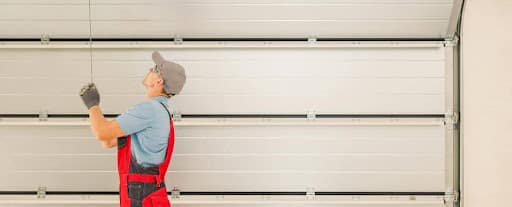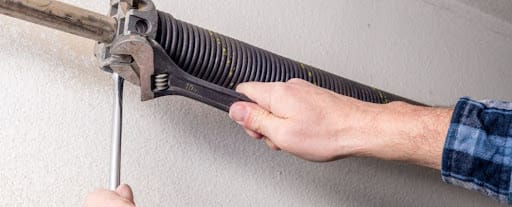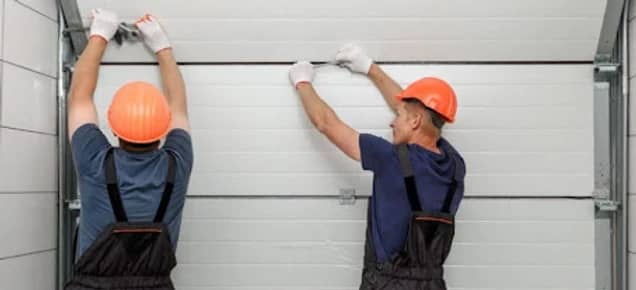We use the garage door almost daily, but we hardly think about its maintenance until it gets faulty or we see some broken parts. It is a serious problem that you must avoid. Many overlook that faulty/damaged garage doors are not just safety hazards for your cars but also for you and your family.
A regular, thorough inspection can help you identify minor issues, allowing you to get your doors repaired before they get fatal. In addition, inspections also help extend the life of your garage door and save money that you would have to spend on conducting significant repairs.
You should not ignore a garage door inspection. Inspect your garage door once every few months to repair damage when they are still minor. With advanced safety features like an auto-reversal system, inspecting the garage door becomes even more critical. A fault in such systems can be fatal. Keep reading to learn more about why and how you can conduct a garage door inspection.
Why Does One Need To Inspect A Garage Door?

These are the top three reasons you should consider garage door inspection.
To Ensure Safety
A garage door weighs hundreds of pounds. Say you have an overhead door that suddenly comes down on your car instead of stopping on its own, and now your car has some severe damage. You can still repair a damaged car, but what if it was a person? If you had identified this issue with the garage door sooner, this accident would not have happened. So to ensure safety and avoid accidents, garage door inspection is a must.
Save Money
If you find problems in your garage doors timely, you can fix them immediately with minimum repairs. However, if you keep ignoring the garage doors, one day, you might have to pay a hefty repair bill. If the issue’s magnitude is too high, you might even have to replace the whole thing.
To See If The Door Is In Good Condition
Wear and tear are common. Sometimes the signs of wear go unnoticed, which then degrades the life of your garage door. When you visually check the garage door, you may identify these issues and take necessary action immediately.
How You Can Inspect Your Garage Door

You can always hire professionals for a detailed garage door inspection. Professionals have an eye for finding minor faults as well. Moreover, they use special equipment to guide them. But if hiring professionals is not feasible for you, you can hire a technician for an annual inspection while you visually check the garage door every month on your own.
For a quick regular review, here is our ultimate inspection process checklist to help you. Start with the first thing on the list and follow it till the end. This process should be sufficient to identify any possible damages to your garage door safety system.
We’ll also discuss some maintenance tips you can consider after you visually check your garage doors.
1. Inspect The Photo Eye Sensors
Photoelectric sensors (or photo eyes) are a safety feature to avoid getting cars, people, and objects under the garage door while it is closing. Most garage doors use photoelectric sensors if they haven’t installed any other auto-reversal mechanism.
Photoelectric eyes are placed on both sides of the door. They need to be placed at a low height from the surface, and both need to be horizontally in the same line. These photo eye sensors emit a light ray. If this light ray is interrupted by anything, the doors will immediately stop moving down. This is how it protects you and your vehicle from getting under the heavy garage door.
Before you test to see if the sensors are working correctly, ensure that they are securely attached to the sides of the door.
You need to place an object below the door to check if the photo eye sensors are working properly. Make sure that the object is interrupting the light rays. The sensors work perfectly if it does not move after you use the garage door opener. Now use garage door openers to close the door. If the door closes, your photo eyes aren’t working as they should be.
2. Inspect Push Buttons And Remote Controls
Testing a garage door opener is very easy. You must have a wall-mounted push button or a remote control that works as a garage door opener. Ensure the button or the remote is out of reach of children. Just press the button, and if the door opens, the buttons are working; otherwise, get in touch with a technician to rectify the issue.
3. Check Safety Auto-Reversal System
Auto-reversal system is another essential safety feature in a garage door, and ensuring it’s in working order is highly crucial. If your door touches something while closing, it should automatically reverse its motion. Test it by placing some object below the door and closing it using your garage opener. If it reverses after touching the object, you can be sure that the system is working well. It is vital to ensure that the auto-reversal works properly to avoid accidents.
4. Inspect Track And Rollers
The push buttons just begin the door’s closing or opening procedure. However, the tracks and rollers are essential to the entire closing and opening process. When using the garage door openers, if the door won’t open, first make sure the track and rollers are in good shape. They may develop minor corrosion and dents over time. If the tracks and rollers are in good condition, the push button is typically the only component that needs repair.
5. Inspect Hardware
Garage doors are usually heavy, and when they move either to open or close, they cause a lot of vibration. Due to this vibration, some screws might become loose. Inspect the screws, hinges, and roller brackets. See if anything is out of place or loosely fit.
6. Inspect Springs
You will find two springs: the extension spring is above the upper track, and the torsion spring is above the door. Close the door and check the springs. If they are rusted and worn out, consider replacing them or showing them to a technician. Lubricate the springs if they are making a sound while opening the door. You’ll find retention cables of extension springs; check if they are in good condition.
Lubricate the springs but don’t try to replace them on your own. It requires a professional’s expertise; people without knowledge can get hurt.
7. Inspect Garage Door Pulleys, And Lifting Cables
Pulleys and springs are subject to a lot of damage. Check for any damage or corrosion and take help from a technician for replacement if required.
8. Inspect Weatherstripping
Weatherstripping is used to seal the room completely. Close the door and see if light rays are coming through the door’s edges. Also, check for wear and tear.
Perform Maintenance After Inspection

After you are done with the garage door inspection, take some measures to ensure that the door stays in good condition for a long time. You can do some things on your own, but stuff like spring replacements should be handled by a trained garage door technician only.
Here are some things you can do as part of regular garage door maintenance.
- Cleaning: Clean all the hinges, springs, tracks, and other components. Sometimes just cleaning the dirt and debris can help the springs move smoothly. Because of the lubricants used, dirt would immediately stick to these parts. You can use cloths, cleaning agents, toothbrushes, and other cleaning materials to clean your garage door.
- Tighten the hardware: When inspecting your garage door, make it a habit to tighten all the screws, brackets, and hinges. Due to vibration, the screws might come out, so make sure everything is in place by tightening the screws.
- Lubrication: If you hear noise while opening or closing the door, your door needs some lubrication immediately. Lubrication ensures that all parts are moving smoothly without any interruption. While tightening all the parts, keep a bottle of lubricant and apply it to all moving parts like springs and hinges.
- Paint the garage door: The garage door is subject to a lot of heat and other harsh environmental conditions. To ensure it lasts you long, paint it every 3-4 years.
- Use the door only when required: Many people like to enter through the garage instead of the main entrance. No, don’t do it. Moving a heavy door so often can be too rough on the parts of the garage door. If you keep using it as a normal door, you will have to replace parts within a few years.
Bottom line
Garage doors are often neglected even though we use them daily. Not until there has been a problem do we consider inspecting the door’s condition. Inspection is essential not only to prevent accidents but also to help the door last longer. You don’t need to put in much effort to maintain the door. Just grab some tools and look at each part of the door. As you do this, tighten all the screws if they are loose. Lubricate if needed and remove dirt.
Even if you do this much, it can be of great help. If problems escalate, you might have to spend a lot of money on replacing the door, or some parts, so fix minor issues as and when they occur by inspecting the garage door regularly.



